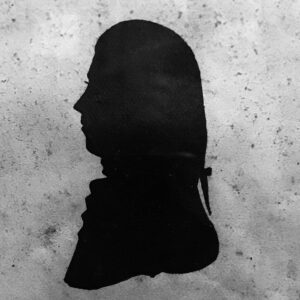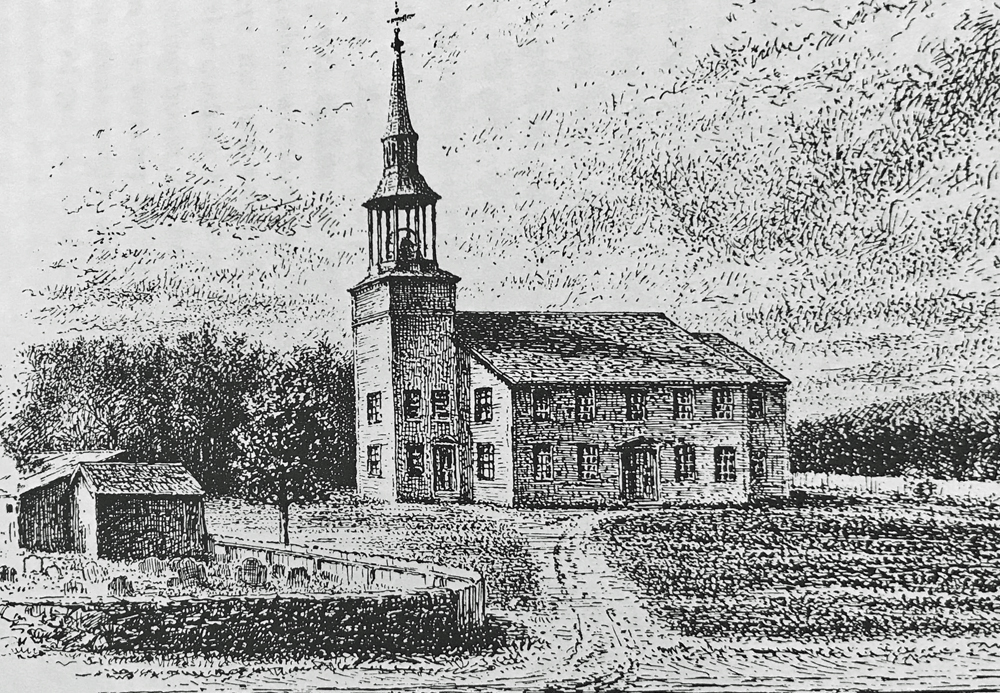Canton’s True Tales: Melee at the Meetinghouse
By George T. ComeauHistory takes a very long view of conflicts, and as divided as the country is today, this is not the first time that deep divisions split our society. Of course the Civil War is a great example of the kind of rift that divides a nation, but it is crystal clear that our nation, born out of conflict, has divisiveness baked into our DNA. A fine example of the discord that has been ever present in our people is an event that happened in Canton 222 years ago: the Independence Day Melee.
In the 1788-89 presidential election, the first such election following the ratification of the U.S. Constitution in 1788, General George Washington won the votes of every member of the Electoral College. The universal victory was against the backdrop of the fact that political parties had yet to be formed. Not that the fledgling nation was in unanimous political consent. There were two growing parties — the Federalists, who supported ratification of the newly written Constitution, and the Ant-Federalists, who opposed the Constitution. Within a few short years, and as a result of Alexander Hamilton, parties, or voting blocs, emerged. By 1793, Thomas Jefferson’s followers became known as the Republicans (or the Democratic-Republicans) and Hamilton’s followers became known as the Federalists.
By 1798 people had assumed one side or the other. The Republicans as they were better known (not to be confused with the present-day party of the same name) believed in political equality and expansionism. Meanwhile, Hamilton’s Federalists believed in favoring banks, national over state government, manufacturing, a central army and navy, and when it came to choosing sides with nations, they stood by Great Britain and opposed the common people of the French Revolution. In time the Republicans would become the party today known as the Democrats and the Federalists lost power and collapsed in 1816. But New England was a hotbed of support for the Federalist party up through the War of 1812.
Bad feelings existed between followers of each party. Daniel Huntoon, a local historian in the late 19th century, wrote that in small New England towns, including Canton, “the excitement was so great, and the animosity so intense, that neighbors were at variance with neighbors, and members of the same family, belonging to opposite political parties would hold no intercourse one with another. On some public occasions the opposing parties would revile each other in vigorous language.” All this sounds so familiar with the events of today.
In 1798 Canton prepared to celebrate July 4th with a grand and fitting event. The Federalist party made great preparations and reserved the meetinghouse as the place for their celebration. An eminent physician by the name of Dr. Moses Baker had come to Canton from Randolph in 1789. Baker taught winter school at Ponkapoag and was one of the men who in 1795 signed the petition to separate the town from Stoughton. Baker was chosen as the orator for the celebration and had the reputation as an “easy and fluent speaker.” In addition to Dr. Baker, the organizers invited the members of the “Light Horse,” a calvary troop that was part of the Second Brigade, First Division under the command of Captain Elijah Crane. At each step of the planning for this celebration the Federalists harkened towards the pomp and circumstance and showy notions of their idyllic view of America.
Meanwhile, the Democratic-Republicans were incensed to the point of indignation that they would not be able to take part in the glory of the day. Why, they asked, should the “British party have the exclusive use of the meetinghouse?” A plan was hatched to crash the event and make their voices heard. It wasn’t very hard to find rabble rousers willing to stir up trouble. The town was divided and the men were ready for trouble. It was decided that on the morning of the Fourth of July they would gather in Ponkapoag and proceed to the meetinghouse and disturb the proceedings.

A profile silhouette of Reverend Zachariah Howard, who preached in Canton from 1786 until his death in 1806 (Collection of the Canton Historical Society)
Huntoon describes the scene: “The sun rose bright and clear on the morning of this eventful day. The boys were all on hand early. John Wentworth, of Ponkapoag, who was in full sympathy with the movement, had a number of men in his employ engaged in the manufacture of hats; they all turned out. All the employees of the tannery put in an appearance, and from farm and workshop, far and near, assembled at Ponkapoag.” All the men came prepared for mischief — one brought a string of sleigh bells on a leather strap, and another carried a heavy ox chain, while another had a loud horn concealed in his belt. Every man carried an “innocent looking walking-cane” that would make for an easy weapon. As they all gathered, more men came from the houses and shops and assembled.
The rowdiness of the men attracted the attention of others along the way and they joined the parade up Washington Street towards the meetinghouse. The gathering was described as that of a snowball — increasing in size as it progressed. When they arrived in front of the church they met up with a second contingent from the south side of Canton and together they entered the church, ostensibly as “guests” to occupy the gallery space above. In the center of the meetinghouse sat the militia company in all their splendid finery — described as “gorgeous uniforms.” In deference to the religious nature of the space, wide boards had been placed across the pulpit for the use of Dr. Baker to speak from. The neighboring clergy from surrounding towns were in attendance and the church was packed to capacity. Even ladies “graced the occasion.”
The event began in solemnity with an invocation by Reverend Zachariah Howard, which was followed by a hymn. As Dr. Baker ascended the scaffolding, a murmur began in the gallery above. Not but a single sentence was uttered when a crash was heard from the gallery. The men above began jumping from seat to seat, causing an uproar of noise. The men began whacking the pews with their canes, and a “fish horn” was heard commingling with “the jingle of sleigh bells.” The noise became an uproar and all of the men created an “insulting noise to stop the speaker” to make their disappointment known, “by many a murmur, hum and groan.”
The officers below mounted a table and Captain Crane cried out that unless the noise stopped he would declare that they are all guilty of a riot. Then Crane’s nephew cried out, “Uncle ‘Lijah, we don’t want no Federal ‘ration here!” And then, to further create disarray, the Democratic-Republicans began singing the old Revolutionary War hymn “Old Chester.” It was mayhem and the assembly was ruined and the event ended abruptly.
The ringleaders of the group were summoned to the court in Dedham to account for their behavior. Lame excuses flowed and the judge looked upon the men and remarked lightly that “some disturbance must be expected on the Fourth of July,” and added they go home “and don’t sing quite so loud next time.” Apparently the judge had a political bent that favored the Democratic-Republicans. It would be 28 years before the town of Canton would celebrate the holiday again.
And so, we have been divided before and will be so again. The Federalists lost their power a few years later and the Democratic-Republicans split and became the forerunner of the modern Democratic party as we know it today. In the aftermath of the melee, a satirical poem was posted on trees in conspicuous places around town and the bad blood simmered for years. Nearly every line of the poem contained a hidden slur against the Federalists that participated at the event that day. The wounds healed with the passing of a generation and a period of peace ensued. To this day the two-party system still causes a ruckus that divides honorable people on both sides of the aisle. Same as it ever was.
Short URL: https://www.thecantoncitizen.com/?p=68599











